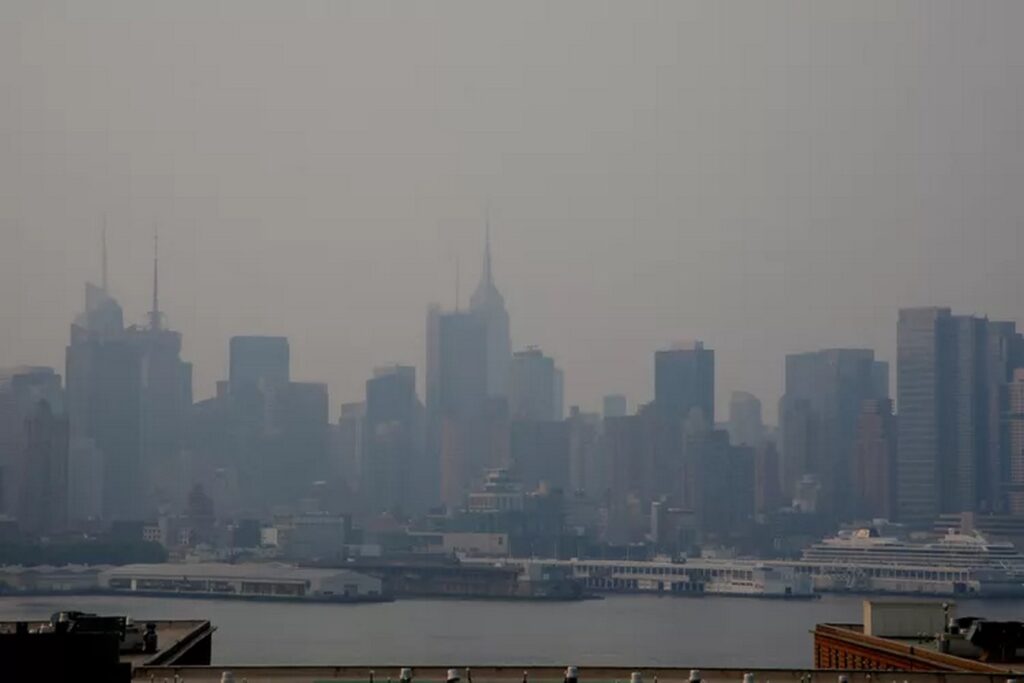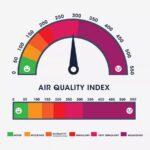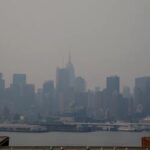Understanding Air Quality Alerts

Encountering the notification “unhealthy air quality for sensitive groups” on your weather app may provoke concern, but understanding its significance can be crucial for safeguarding health. This alert, often referred to as “code orange,” indicates days when outdoor air pollution levels pose potential hazards, particularly for children, the elderly, and individuals with pre-existing health conditions.

Causes of Unhealthy Air Quality
Unhealthy air quality stems from various sources, including emissions from industrial facilities, wildfires, seasonal pollen, and even weather conditions. Factors such as high pressure systems and thermal inversions exacerbate pollution levels by trapping pollutants near the Earth’s surface. Additionally, wind patterns can transport pollutants over long distances, as evidenced by dust from Africa’s Sahara Desert reaching the U.S. Gulf of Mexico.
Sensitive Groups at Risk
While polluted air poses risks to all individuals, certain groups are more vulnerable, including children, seniors, outdoor workers, and those with heart or lung conditions like asthma and bronchitis. For children, prolonged outdoor exposure increases the risk of irreversible lung damage, compounded by the prevalence of asthma. Older adults, due to age-related vulnerabilities, are also at heightened risk, along with individuals with cardiovascular diseases and diabetes.
The Air Quality Index (AQI)
The Air Quality Index (AQI) serves as a vital tool for assessing daily air quality conditions. Developed under the Clean Air Act, the AQI categorizes air quality using color-coded alerts and provides guidance for minimizing health risks associated with poor air quality. Major pollutants measured by the AQI include ground-level ozone, carbon monoxide, sulfur dioxide, nitrogen dioxide, and particulate matter.

Categories of Air Quality
The AQI comprises six color-coded categories, ranging from “good” to “hazardous,” based on pollutant concentrations. Each category corresponds to specific AQI values, with higher values indicating greater pollution levels and associated health risks. For instance, “unhealthy for sensitive groups” signifies elevated pollution levels that may impact sensitive populations, necessitating precautionary measures.
Effectiveness of Air Quality Alerts
Air quality alerts play a crucial role in reducing mortality rates associated with poor air quality. However, their effectiveness relies on widespread availability and public understanding. While major metropolitan areas are required to report daily AQI, residents of smaller towns may not have access to air quality data. Nonetheless, resources such as Airnow.gov and the EPA-sponsored EnviroFlash program offer valuable air quality information and alerts.
Mitigating Health Risks
During periods of unhealthy air quality, minimizing outdoor exposure is paramount. Additional measures, such as using HEPA filters indoors, wearing masks, and staying hydrated, can further reduce pollutant exposure and mitigate health risks. Awareness of air quality conditions and proactive measures are essential for protecting public health in the face of environmental challenges.
In conclusion, understanding air quality alerts and taking appropriate precautions are vital for safeguarding health, particularly for vulnerable populations. By staying informed and implementing preventive measures, individuals can mitigate the adverse effects of poor air quality on their well-being.


 English
English 
































































































































































































































































































































































